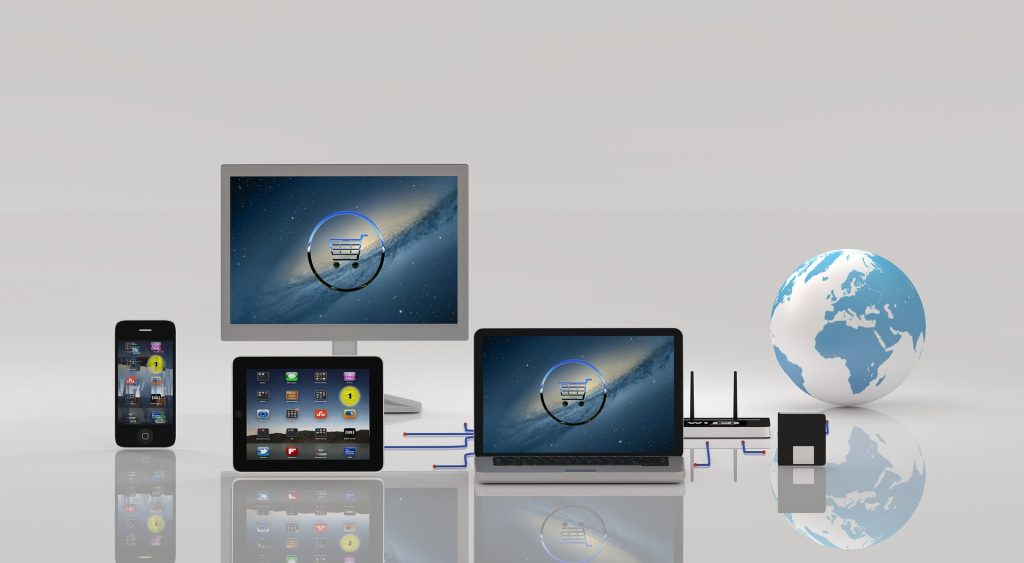Welche Strategien zur Visualisierung von eCommerce-Produkten
Sie kennen sollten.
Wir leben in einer visuellen Welt. Insgesamt 81 Prozent der Amerikaner besitzen heute ein Smartphone, was bedeutet, dass sie jederzeit ein von allem Erdenklichen ein Bild sehen können. Insgesamt 22,6 Prozent aller Google-Suchen sind speziell auf Bilder ausgerichtet.

Im eCommerce kann die Bedeutung von Bildern nicht genug betont werden: 59 Prozent der Kunden betrachten Bilder als den wichtigsten Faktor bei ihrer Entscheidung für einen Online-Kauf – wichtiger als Produktbeschreibungen, Rezensionen oder sogar Preise.
Aber die Customer Journey der eCommerce-Kunden endet nicht mit dem Kauf: Erst wenn ein Kunde tatsächlich ein physisches Produkt erhält, stärkt dies seine Kaufentscheidung. Dennoch ist die Rücklaufquote mit 20 % im eCommerce mehr als doppelt so hoch wie im stationären Einzelhandel.
Die gute Nachricht: Die richtigen Produktvisualisierungen können den Umsatz steigern und die Rendite senken. In dem folgenden Beitrag erhalten Sie einen Überblick darüber, welche Art von visuellen Inhalten in verschiedenen Situationen funktionieren und wie eCommerce-Marken exzellente visuelle Inhalte ohne ein Team von hauptberuflichen Fotografen in ihren Webinhalten einsetzen können.
VR? AR? 3D? Auswahl der richtigen Visualisierung für Ihre eCommerce-Produkte.
In der Zeit der Papierkataloge hatten die Einzelhändler die einfache Aufgabe, hochqualitative Bilder ihrer Waren zu machen und diese an die Käufer zu verteilen. Heute haben eCommerce-Marken eine schwindelerregende Auswahl an Optionen für visuelle Inhalte wie z.B. Virtual Reality (VR), Augmented Reality (AR), interaktives 3D oder klassisches 2D.
Bevor man in eines dieser Optionen investiert, hilft es zu wissen, wo jedes einzelne am besten funktioniert, wenn es um eCommerce-Visualisierungen geht:
VR.
Während VR in einigen Gaming-Anwendungen beliebt ist, hat VR in den meisten eCommerce-Anwendungen noch nicht Fuß gefasst, vor allem wegen des schwierigen Formats: Die meisten Menschen haben einfach nicht die nötige Ausrüstung (z.B. ein Headset), um ein VR-Erlebnis zu ermöglichen.
Es ist jedoch möglich, dass sich die Flut dreht. Die im Mai dieses Jahres eingeführte Oculus Quest ist so erschwinglich, dass sie eine Massenakzeptanz anregen kann. In diesem Fall sollten eCommerce-Marken auf VR setzen, um Vertrauen und Community durch Inhalte aufzubauen.
VR-Inhalte sollten so gestaltet sein, dass Kunden privat genießen können. Das Erlebnis, in einer virtuellen Welt zu verschwinden, ist zu desorientiert, als dass die meisten Menschen bereit wären, es in der Öffentlichkeit zu versuchen.
Augmented Reality.
AR hat einen großen Erfolg im Möbelbereich erzielt und sollte allen Marken, die große, teure oder schwer zustellbare Artikel verkaufen, einen ähnlichen Mehrwert bieten. Mit AR-Anwendungen können Käufer virtuelle Produkte in realen Umgebungen platzieren, um zu sehen, ob sie passen.
Kunden können sehen, ob ein neues Sofa an die Wand passt oder ein Teppich mit Vorhängen funktioniert. Ein Grund für den Boom von AR ist der Formfaktor: Die Käufer benötigen nur ein Smartphone, um eine erweiterte Version ihrer Welt zu sehen.
Interaktives 3D bietet viele überzeugende Anwendungsfälle:
Volle Produktrotation: Ermöglicht es dem Kunden, die 3D-Renderings von Produkten zu manipulieren, um alle Seiten und Winkel zu sehen. Vollständige Rotationen sind in der Regel nützlich für unkomplizierte Produkte mit vielen Details, hochtechnische Produkte und kundenspezifische Produkte.
Product Explosions Produkte mit wichtigen Innenlagen sind perfekte Kandidaten für Produkt Explosions, die es dem Käufer ermöglichen, die Bestandteile eines Produkts zu betrachten. Eine Explosion kann helfen helfen zu veranschaulichen, warum das Preisschild Ihres Artikels höher sein könnte als das Ihrer Mitbewerber.
Klicken und Verschieben von Produkt-Markups: Betrachten Sie diese als interaktive Bedienungsanleitung. Indem Sie anklickbares 3D anbieten, können Sie veranschaulichen, wie man komplexe und mechanische Produkte wie Drucker-Scanner verwendet und hilfreiche Möglichkeiten zur Fehlerbehebung bei häufigen Problemen anbieten.
Auch im eCommerce hat die fotorealistische 2D-Technik noch ihren Platz. Wenn Sie sich für computergenerierte 2D-Bilder entscheiden, können Sie eine höhere Qualität und viel niedrigere Kosten als bei der Beschäftigung von Fotografen erreichen – und Sie können jedem eine Menge Ärger ersparen.
Da diese Bilder computergeneriert sind, sind alle Fotografen, mit denen Sie arbeiten, von der Aufnahme tausender langweiliger und sich wiederholender Bilder befreit, damit sie sich auf Aufnahmen konzentrieren können, die menschliche Kreativität erfordern.
ROI der Produktvisualisierung.
Die richtige Produktvisualisierung kann den Umsatz steigern und die Rendite verringern. Im Allgemeinen stellen eCommerce-Marken fest, dass 22 Prozent der Renditen erzielt werden, weil ein Produkt anders aussieht als auf Bildern auf der Website.
Mit interaktiven 3D- und photorealistischen 2D-Bildern und AR-Anwendungen können Sie dieses Problem lösen. Zudem können bessere Bilder auch die Zahl der Käufer erhöhen: Eine Marke verzeichnete einen Umsatzanstieg von fast 10 Prozent, indem sie einfach die Größe der Fotos auf ihrer Website erhöhte.
Diese Zahlen sind besonders überzeugend, da die digitale Produktvisualisierung in etwa nur 1/1000stel der Kosten verursacht, was ähnliche Anlagen bei manueller Produktion kosten würden. Mit anderen Worten: Computergenerierte Produktvisualisierungen haben einen äußerst günstigen ROI.
Noch wichtiger ist jedoch, dass sie zu Tischgestellen für den eCommerce werden. Heute sind es Disruptoren und zukunfstweisende Marken, die über klassige Visualisierungen verfügen (einschließlich interaktivem 3D, photorealistischer und konfigurierbarer 2D- und AR-Visualisierungen). Bald wird das Standard sein.
eCommerce-Unternehmen, die wettbewerbsfähig bleiben wollen, müssen ihre Produktvisualisierungsstrategien verbessern oder akzeptieren, dass sie Umsätze an besser ausgerüstete Wettbewerber verlieren. Die Zeit für Taten ist jetzt gekommen.
Vielen Dank für Ihren Besuch.


